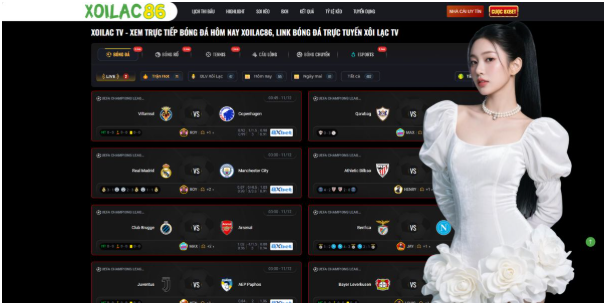
Innumerable definitions exist for life satisfaction. Life satisfaction can manifest as a consequence of an individual’s contentment; however, it does not solely rest there. Rather, it encompasses the entirety of an individual’s lifespan, including their outlook on the future, their well-being throughout the journey, and the outcome they have achieved. Certain individuals even desire the utmost in indulgences, such as the luxury automobiles featured on famous blog sites, or some even splurge money on blackjack games. There will always be people that are so rich that you would not help but wonder how they achieved that wealth, especially those that have a good track record when it comes to their education and business ethics. Some people in this world become rich because of evil or illegal things which quadruple their money in just a snap of a finger, but this will always have consequences and some of them may not be enforced by law, but sometimes the guilt just runs them down. If that is the source of their happiness in life, then it is impossible for anyone to ever deprive them of it. Income and employability are the two factors that may be encountered during this process. These two concepts will be tested in this research within the context of higher education, where students are beginning to construct their futures with a specific understanding of their future occupation. Working students are prevalent in higher education institutions for the following reasons: (1) they provide for their own needs and desires; (2) they finance their education; or (3) they assist their families by earning a living. The numerous justifications for working rather than studying can have detrimental effects on the three aforementioned aspects of education: financial well-being, physical health, and mental health. This article will primarily address the future prospects for students, with a particular emphasis on the enduring anxiety that accompanies graduation due to the fact that not all individuals can readily secure employment. To support this claim, empirical studies will be provided, which will additionally furnish valuable insights regarding future employment prospects. It is crucial that they have this sense of security in order to better equip themselves for the challenges of the real world.
In a scholastic investigation, graduating students were assessed on all the essential elements required for success and employment in the corporate world. It indicates that each individual desired a more elevated position in the specific sectors they desired to operate in, whether the industry be public or private. The utilized criteria are primarily analytical in nature, with potential for development in the domains of reading and reasoning within the educational system. Consequently, the pupils were unable to attain a specific level of proficiency in problem-solving. This may indicate that they are deficient in critical thinking abilities, which are crucial for their mental health and day-to-day functioning. Life satisfaction encompasses the mental dimension as well. Through this study, researchers can delve into the employability and income of working college students, as well as determine whether their jobs impede their learning processes, personal time for reflection, and relaxation.
A second assessment of students’ skills was conducted in a Malaysian college; however, this time, the students were given the opportunity to select which skills they believed were most important to develop during their time in college so that they could bring to the business world. The results revealed that good time management and discipline are two of the factors that students consider to be of the utmost importance. The Department of Education Australia’s employability skills summary merged discipline and time management. Among the skills outlined for college students to possess when applying for a particular job is self-management. Working students must daily improve their time management and self-control in order to fulfill their responsibilities as both students and employees, whether independently or for an organization.
The employability and income of working college students were not considered in a comprehensive study examining the negative impact of these jobs on them. Certain studies assess the extent to which college students are prepared for corporate life and the breadth of their skill sets, but not in a particular manner, because while not all college students are employed, there will invariably be at least one professional among this population. Additionally, physical, mental, and financial facets of life will be impacted during pandemic times. When did previous research indicate that college students continue to lack skills? What is the situation with working students, and what if they are proficient in skills but unable to concentrate due to the dual responsibilities they are juggling? Are the three factors under investigation significant and impacted by this?
The objective of Freeman’s study was to illuminate a range of seemingly unrelated but undeniably interconnected facets of the communications sector. A variety of communication and media-related subjects that are commonly covered in introductory-level university courses are succinctly covered in this chapter. The introduction includes both Laswell’s model and the primary modes of communication. While not consistently addressed explicitly, the topic of media literacy consistently influences the overall discourse, which is a common occurrence in introductory media courses. Before we can fathom the fundamentals of media literacy, we must first grasp the fundamentals of communication and the media industry. In this investigation, the primary media categories are enumerated. In order to provide a more comprehensive comprehension of the media, this chapter additionally emphasizes its fundamental functions and addresses a multitude of aspects within the industry. While acknowledging that undertaking such an endeavor is outside the purview, an effort is made to communicate concepts that may stimulate further investigation, discourse, and literature. This approach leverages the knowledge component of the research, which suggests that prioritizing the implementation of knowledge among both passengers and employees is crucial, given the necessity for media literacy in the realm of communication.
The terms “safety” and “security” are often employed interchangeably in colloquial discourse regarding the study of Nas. Numerous dictionaries, however, list them as synonyms. However, an ongoing endeavor has been to establish the precise distinction between the terms “security” and “safety” as they pertain to maritime and aviation transportation. The subsequent definitions have been proposed in scholarly literature to differentiate between these two concepts. In summary, the JEMS articles will consider the “safety” and “security” criteria as delineated subsequently. Safety is the absence of hazards caused by arbitrary, unanticipated human or natural factors. Hazards may arise due to a combination of natural occurrences and human error. Security can be defined as the state of being devoid of hazards resulting from deliberate human aggression. Risk is deliberately introduced by human beings as its originator. This study can be linked to one of the aforementioned factors, namely risk. Risk is not limited to flight-related dangers; it also encompasses internet security and the protection of passengers’ personal information, which is required to access services.
Assemblies of defenses against the interception of communication transmissions constitute communications security. Controls and measures implemented to ensure the integrity of communications and prevent unauthorized individuals from accessing information derived from them. A component of communications security is cryptography. This paragraph elaborates on the point made in the previous one regarding the significance of security measures in mitigating risks, particularly in the context of airline operations.






